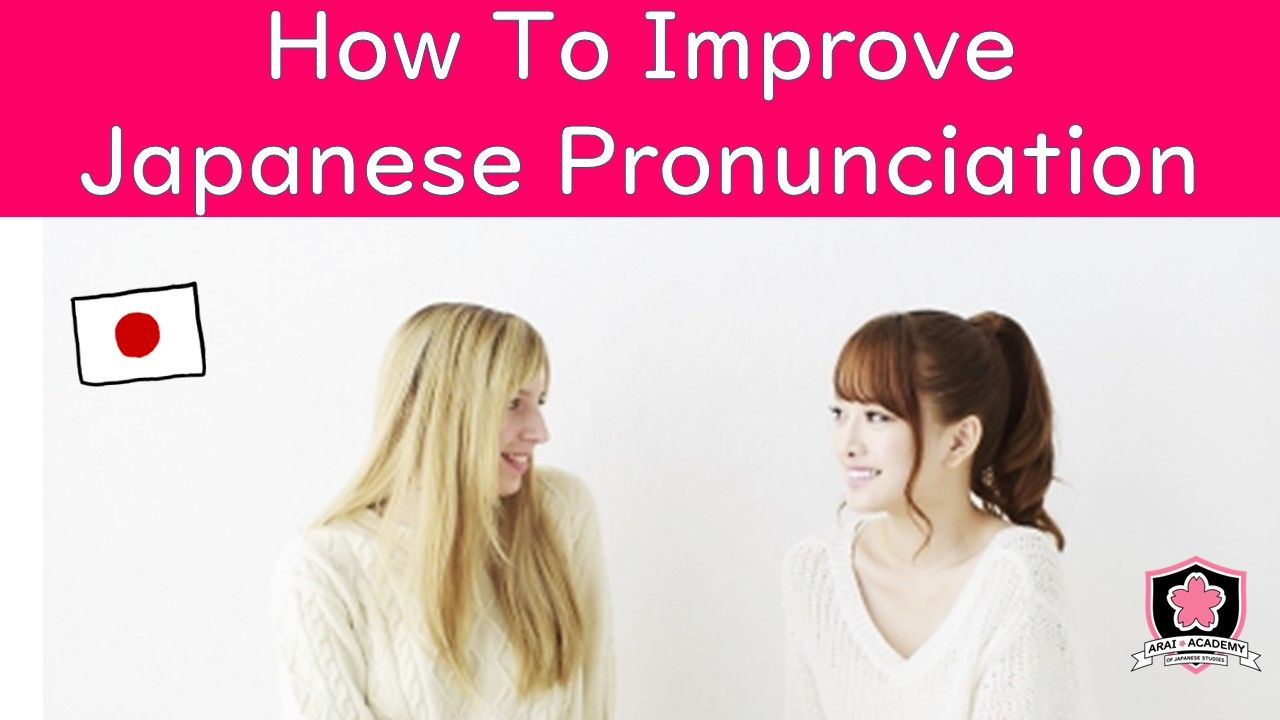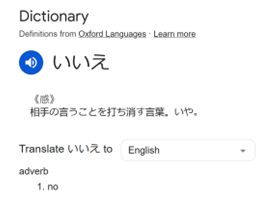How To Improve Japanese Pronunciation
Mar 21, 2025
Do you find Japanese pronunciation a bit difficult? If so, you’re not alone. Learning the correct pronunciation in any foreign language is a challenge.
But it’s also a challenge I understand very well - I faced the same thing when I learnt English! I studied phonetics in both English and Japanese, as well as language acquisition, at the School of Oriental and African Studies at the University of London. In this article, I’ll share the methods I’ve learned for how to improve Japanese pronunciation. I’ll also share the methods I’ve developed myself over the last 20 years of teaching diplomats, business leaders, university courses and private students.
When you finish reading this article, you’ll be ready to start training your tongue!
(By the way, when I studied English pronunciation, my tongue got so sore that I had to massage it… I’ll make sure you don’t suffer the same fate!)
The good news is that, when speaking Japanese, you can relax your tongue a lot more than when you speak in English.
It’s also quite easy to pronounce Japanese words once you understand the sounds of the hiragana table with Japanese vowel sounds - it’s a totally phonetic language.
Japanese pronunciation is so simple that even one of my students - a complete beginner when he started with me - managed to impress his clients with his clear pronunciation on a business trip to Japan after just 3 weeks.
You can absolutely master Japanese pronunciation… when you learn the right way!
Here are my 5 tips for improving your Japanese pronunciation:
- Master the 5 vowel sounds
- Check whether or not to stretch the sound
- Check whether or not to hold the next sound a little bit
- Speak in chunks
- Make sure the pitch of your voice falls at the end
Japanese has many words that sound very similar, and many Japanese learners accidentally substitute one for the other when they haven’t yet mastered Japanese pronunciation. It’s a bit like when English learners confuse ‘L’ and ‘R’ sounds in words like ‘play’ and ‘pray.’
But, if you follow these 5 steps, you’ll learn to avoid those common mistakes.
-
Master the 5 vowel sounds
There are only 5 vowel sounds in Japanese, あ [a] い [i] う [u] え [e] お [o]. English has around 20. Think about the difference between the words ‘cat’ and ‘car’ and you’ll see what I mean - they have the same vowel, but they sound different. The Japanese あ [a] is the same every time, but Japanese learners often struggle to get it right.
This is because for most learners, their native English vowel sounds tend to sit somewhere between different Japanese vowels, rather than being a direct phonetic comparison.

For example, how does it sound when you say these words out loud?
- いえ [ie] house
- いう [iu] to say
These can sound almost the same if you don’t make each vowel sound 100% clear. This can lead to miscommunication with Japanese people who might not be able to understand which word you’re trying to say.

If you learn the 5 vowel sounds properly, you’ll never make this mistake again.
Let’s try some more words:
- かい [ka i] clam
- こい [ko i] koi fish
Were you able to say those clearly?
Once you’ve differentiated all 5 vowels, you can move on to learning the rest of the hiragana table, one line at a time. The next step after the vowels would be learning か [ka] き [ki] く[ku] け [ke] こ [ko].
Here are some more difficult words combining vowels and consonants:
- ひとつ [hi to tsu] 1 thing
- ふたつ [hu ta tsu] 2 things
These words sound completely different to Japanese people when you pronounce them correctly. When you can do that properly, you can avoid receiving only one coffee when you actually ordered two for yourself and a friend at a café!
Almost all Japanese learners struggle with pronunciation at some point, but if you take it step-by-step, as I talked about in my article Japanese Study: 5 Steps For Effective Input, you’ll soon be able to sound like a native speaker!
-
Check whether or not to stretch the sound
In Japanese, the length of each sound is critically important. Words can take on completely different meanings depending on whether a sound is long or short.
For example, try saying these words out loud:
- いえ [ie] house
- いいえ [i ie] no
Getting this wrong can sound a bit like the difference between ‘eel’ vs ‘ill’ or ‘pool’ vs ‘pull’ in English. Of course, Japanese people can sometimes understand what you mean from the context of the conversation, but it can sometimes take them a bit of time to figure out what you mean.
There are also cases where the opposite can happen. If you don’t understand the exact pronunciation of a word in Japanese, you might struggle to understand what it means when someone says it to you.
Try these:
- せん [sen] 1,000
- にせん [ni sen] 2,000
These words are very easy to understand when you read them. However, it’s often difficult for learners to understand ‘2’ when a native speaker says it to them. This is because it’s an unexpectedly short sound. Japanese learners tend to try to pronounce it like this:
にいせん [ni i sen]
‘2’ never gets stretched like this in Japanese, so if you’re used to this pronunciation, not only Japanese people will not be able to understand you, but you won’t be able to understand them when they say it to you correctly!
This can lead to big misunderstandings if you’re trying to buy something. If you’re not used to the short ‘ni’ sound, you might miss it entirely! Imagine a clerk asking you for ¥2,000, and you only give them ¥1,000.
The trick to overcoming this is focusing on the length of the sounds when you encounter new words. Say them aloud and hear the different sounds. If you can, repeat after audio to make sure you’re getting it right.
-
Check whether or not to hold the next sound a little bit
Another point to pay attention to in Japanese pronunciation is holding the next sound for a little bit.
It’s a bit like a pause, but instead of just silence, you’re getting ready to say the next sound but hold it for a moment. This is normally marked with a small つ [tsu], which looks like this: っ.
Here are some examples where holding the next sound changes the meaning entirely:
- いち [i chi] one vs いっち [ i cchi] perfect fit
- まち [ma chi] town vs まっち/マッチ [ma cchi] a match (to light something)
- さか [sa ka] slope vs さっか [sa kka] writer
I’m sure you can imagine the confusion mispronouncing these words might cause! ‘I like this まち [ma chi]’ and ‘I like this マッチ [ma cchi]’ mean completely different things.
Practice new words until you can feel the difference. That way, you’ll never make these mistakes again.

-
Speak in chunks.
Japanese phrases contain particles to mark certain functions in a sentence. When you pause between a word and its particle, it’s very difficult to understand for Japanese people.
Let’s look at 2 sentences with the particle を [o]. The first has a pause after the particle, and the second has a pause before the particle:
A: ゲームを します。 [game-o shimasu] I play games.
VS
B: ゲーム をします。 [game oshimasu] ???
The first is easy to understand because the pause is after the particle を [o]. This shows that the object of [shimasu] play is marked with ‘を’.
On the other hand, in the second example, the object ‘game’ and the particle を are separated, which makes it seem like the particle, or even just its sound, is attached to ‘shimasu.’ ‘Oshimasu’ means ‘to push’ in Japanese, and it makes the meaning very strange and difficult to understand.
Please remember: the particle always follows the phrase it marks for, so don’t separate them.
Japanese people also omit repetitive phrases in natural conversation. When you omit a phrase, you should also omit the particle it’s attached to.
For example, have a look at the following conversation:
A: ゲームをしますか。 Do you play games?
B: はい、ゲームをします。 Yes, I play games.
In English, this is an acceptable response. In Japanese, it’s seen as repetitive. A better answer would be:
A: ゲームをしますか。 Do you play games?
B: はい、します。 Yes, I play.
Notice that the particle ‘を’ is also disappears, because it marks the word ゲーム, which was omitted. I talk more about why Japanese people omit repetitive phrases in my article How To Learn Japanese.
-
Make sure the pitch of your voice falls at the end
In English, it’s natural for people to raise the pitch of their voice at the end of a phrase if it’s in the middle of a sentence. This pitch shift is used to show that you’re continuing the sentence, not ending it.
However, it sounds strange in Japanese.
A common mistake is for Japanese learners to carry over their English intonation into Japanese.
Read the following sentence:
あついので、ビーチにいって、カクテルをのみました。
Because it was hot, I went to the beach and had some cocktails.
In English, the pitch of your voice would normally shift up on the word ‘hot.’ However, this doesn’t sound elegant or correct in Japanese.
To get the Japanese accent and sentence flow sounding natural, it’s necessary to say the sentence aloud, making sure your pitch drops rather than rises.
Repeating after audio - and even recording yourself speaking and listening to the playback - is how you can master Japanese intonation.
Once you master these 5 points, make sure you practice self-talk, repeat after audio sources and record yourself speaking. You’ll sound like a native Japanese speaker in no time!
I go into these tips in detail in my free webinar on How To Speak Japanese For Beginners, which you can access instantly. I share all my insights on how to become a confident Japanese speaker in as little as 4 weeks.
Also, if you’ve been considering signing up for the Master Speaking Japanese course, I’ve extended the offer of a free sign-up gift until March 31st. You can sign up here to claim the gift.
Mineko Arai
Hello! I'm Mineko Arai. I’ve been teaching Japanese for about 20 years. I was a lecturer at top UK universities like the School of Oriental and African Studies at the University of London, the University of Sheffield, and King's College.
I was also employed by the British Foreign and Commonwealth Office to prepare diplomats for postings to the British embassy in Tokyo.
I'm now the director of the Arai Academy of Japanese Studies. The academy has provided corporate training to the British Museum, as well as executives and business leaders at companies like Deloitte, Sony, Dentsu and Mitsubishi UFJ Bank.
I was also voted #1 online tutor at Vidalingua.
I have an MA in applied Japanese linguistics from the School of Oriental and African Studies at the University of London and an MBA in Education Management from King's College.
Most textbooks and courses lock you in to stock examples and phrases, which are unusable, and sound stiff and unnatural. However, the Master Speaking Japanese course empowers you to say exactly what you want naturally and fluently from the very beginning! Get started here for free!
Succeed in Japanese!
Q: Have you ever learnt how to study Japanese effectively?
Q: Do you feel like you're making progress?
Join our mailing list to receive FREE 'Tips for Achievement!'
We hate SPAM. We will never sell your information, for any reason.




